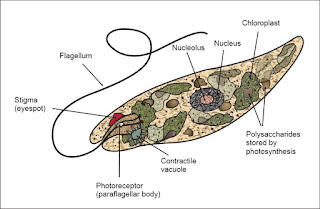General Characteristics and Classification of Cnidaria
A brief introduction to phylum Cnidaria
Phylum Cnidaria (also called as coelenterata) includes about 9000 species. Some are found
in fresh water, but the greater numbers are in marines. Coelenterates (Greek word. koilos- hollow + enterongut) are the simplest of eumetazoans. .They include the hydra, jellyfish, sea
anemones and corals.
GENERAL CHARACTERS-
1. Cnidarians are multicellular animals with tissue grade of organisation.
2.Body radial or bi-radially symmetrical with oral-aboral axis.
3. They are diploblastic animals.
4. Coelenterate animals are represented by two morphologically different types of
individuals, polyps and medusa.
5. Polyps are sessile/stationary (attached to the substratum) with a tubular body (eg. Hydra). Whereas
medusa are free-swimming with an umbrella or bell-shaped body, eg. Aurelia,
Metridium.
6. They are all aquatic, mostly marine and some freshwater (eg. Hydra).
7. They may exhibit solitary or colonial habitat.
8. One of the most characteristic structures of all coelenterates is the stinging cells, called
nematocysts.
9. Nematocysts serve for adhesion, food capture and offence and defence.
10. They have a single gastro-vascular cavity, into which mouth opens.
11. The Planula larva present in the life history of Coelenterata.
CLASSIFICATION-
Phylum Cnidaria has been divided into four Classes-
Class1- Hydrozoa
Class2- Scyphozoa
Class3- Anthozoa
Class4- Cubozoa
Class 1.Hydrozoa
(Gr., hydra- water + zoon- animal)
1. Hydrozoa mostly colonial and marine.
2. Some hydrozoa are solitary and freshwater.
3.They exhibit tetramerous or polymerous radial symmetry.
4. Gastro-vascular cavity without stomodaeum, septa or nematocysts bearing gastric
filament.
5.They exhibit either only polyps or both asexual polyps and sexual medusa form.
6.Gonads are epidermal in origin.
7. Examples are- Hydra,Obelia etc.
Class 2.Scyphozoa (Gr.Skyphos-cup + zoios-animals)
1. They are exclusively marine and solitary forms.
2.The medusa stage is dominant but the polyp stage reduced or absent.
3.The gonads are gastro-dermal and sex cells are shed or released in digestive
cavity.
4. Examples are- Aurelia,Haliclystus,etc.
Class 3 Anthozoa (Actinozoa):
(Gr.Anthos- flower + zoios- animal)
1.They are exclusively marine, may be solitary or colonial.
2.All are polyp forms, nomedusae.
3.They have gastro-dermal gonads.
4. Gasto-vascular cavity is divided into completed and incomplete septa.
5. Skeleton either external or internal.
6. Fertilisation is external.
7. Examples are- Telesto,Tubipora, etc.
Class 4 Cubozoa (Cubomedusa)
1.All are marine,found in tropical and subtropical oceans.
2. The medusa phase is long and dominant.
3. The medusa are squarish in cross section.
4. Radial canals are replaced by four radial pouches.
5. Examples are- Charybdaea, Chiropsalmus,Chironex.




Comments
Post a Comment